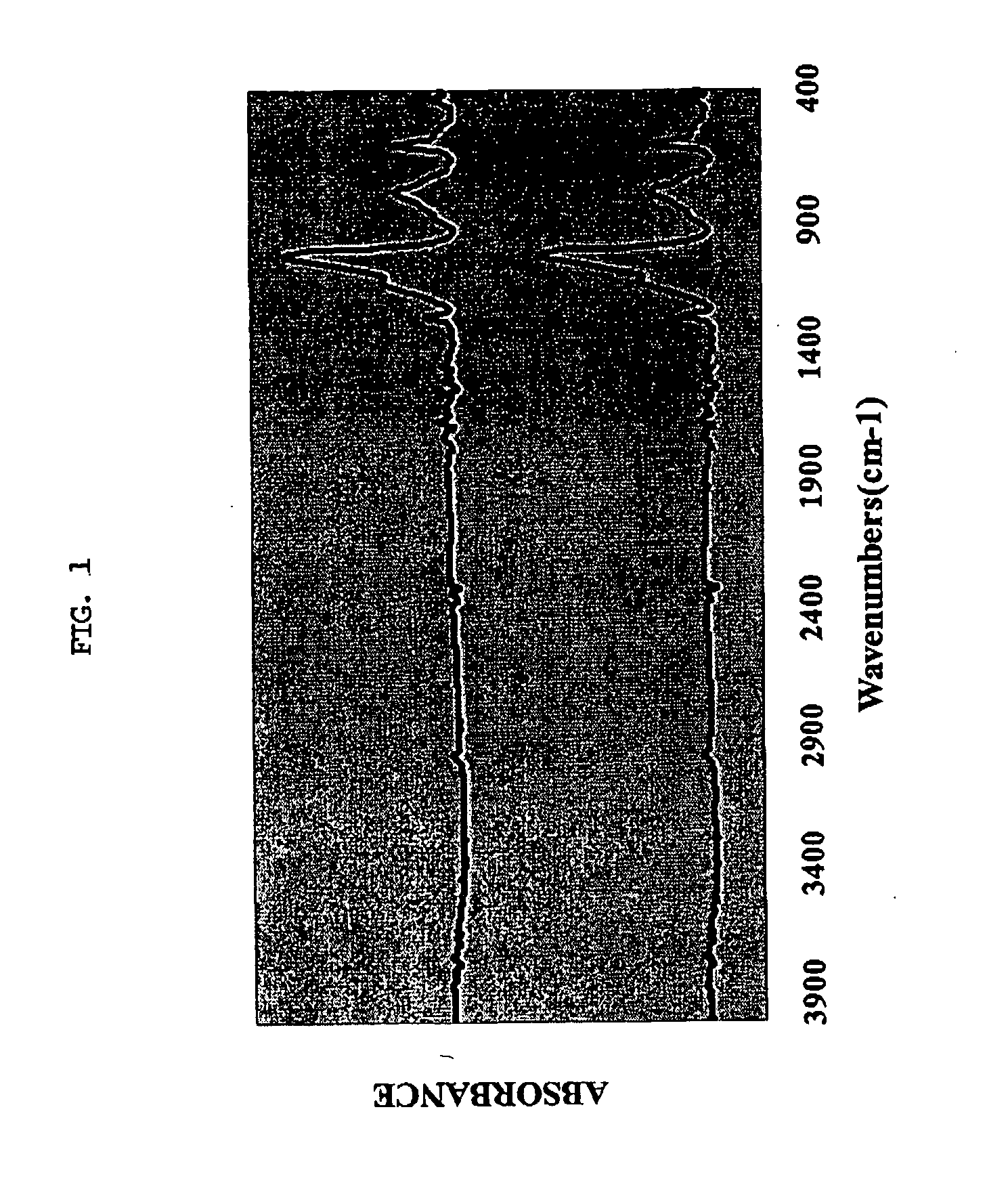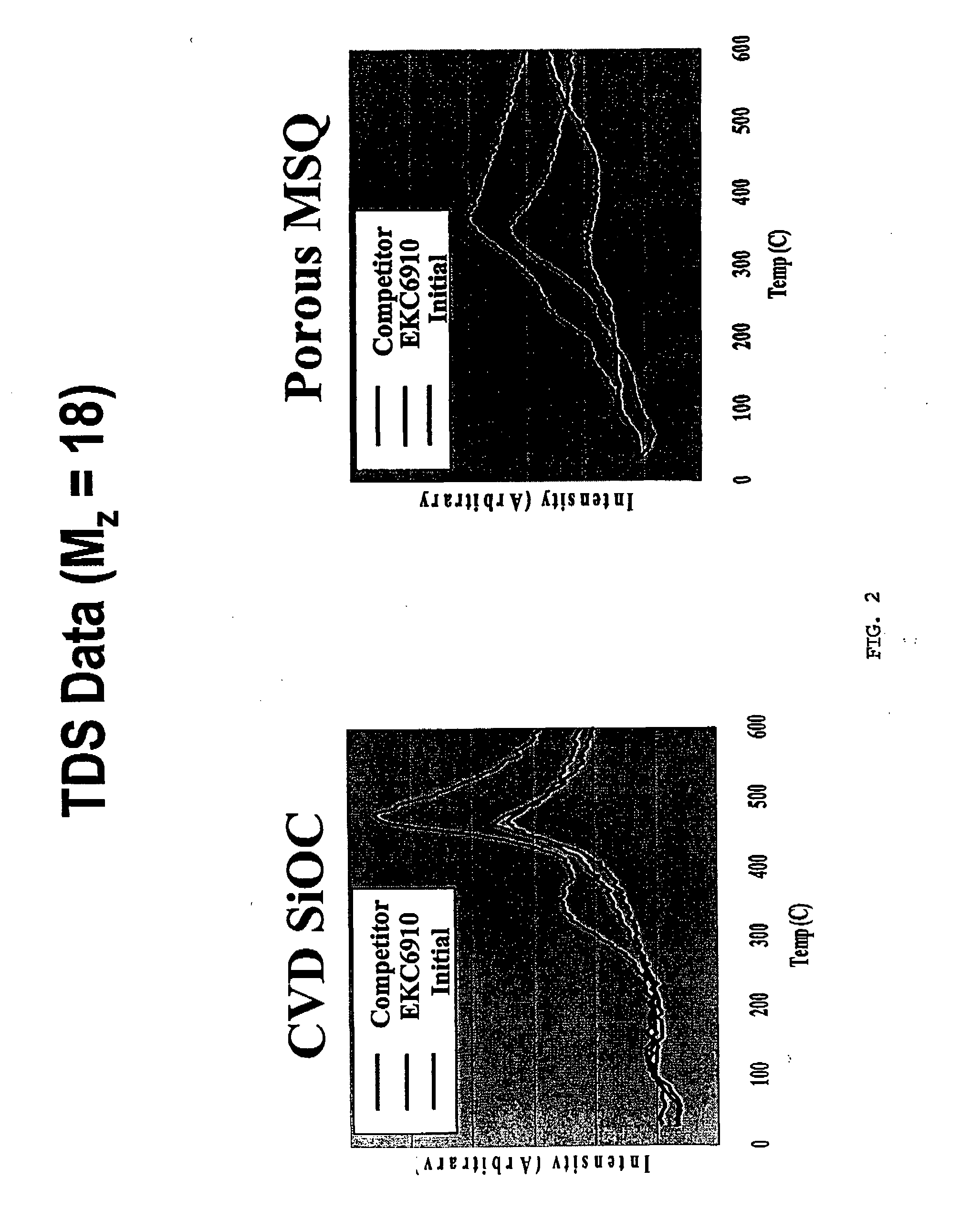Aqueous fluoride compositions for cleaning semiconductor devices
a technology of semiconductor devices and compositions, applied in the direction of inorganic non-surface-active detergent compositions, cleaning using liquids, instruments, etc., can solve the problems of substrate damage, corrosion prevention interference, and degradation of characteristics, and achieve excellent protection and low metal content
- Summary
- Abstract
- Description
- Claims
- Application Information
AI Technical Summary
Benefits of technology
Problems solved by technology
Method used
Image
Examples
examples
[0158] A first embodiment of the copper interconnecting process using the cleaning composition of the present invention is described. The initial steps are the conventional steps until the resist residue produced during formation of via hole is removed using the cleaning composition of the present invention. Here, expansion of the internal diameter of via hole is suppressed, since the cleaning composition of the present invention hardly etches Low-k film and / or its process-modified film.
[0159] Then, the traditional process steps can proceed until the resist residue produced during formation of the trench is removed using the cleaning composition of the present invention. Here, again, the internal diameter of the via hole and the width of the trench are prevented from increasing, since the cleaning composition of the present invention barely etches Low-k film and its modified film.
[0160] Thereafter, silicon nitride film is removed by dry etching to expose a copper interconnection. ...
examples 1-2
Fluoride-Containing Cleaner / Remover Solutions
[0177] Example 1 is a post-etch residue removal composition for use particularly with copper substrates. Its composition is as follows:
ComponentAmount (wt %)Ammonium fluoride0.1N,N-Dimethylacetamide (DMAC)46Diethylene glycol monobutyl ether (DEGBE)13.6DEQUEST 20005Amino-tris(methylenephosphonic acid)2.5Phosphonic acid0.2Water2.3N,N-Diethylethanolamine1Deionized waterbalance
[0178] The pH of the composition of Example 1 was measured as about 7.5.
[0179] Example 2 is another post-etch residue removal composition for use particularly with copper substrates. Its composition is as follows:
ComponentAmount (wt %)Ammonium fluoride0.1%N,N-Dimethylacetamide (DMAC)26Diethylene glycol monobutyl ether (DEGBE)48.5Sulfamic acid1.5N,N-Diethylethanolamine2Deionized waterbalance
[0180] The pH of the composition of Example 1 was measured as about 7.5. We found excellent results were consistantly obtained with a variety of substrates at pH of 7 to 8, pref...
examples 3-4
Bifluoride-Containing Cleaner / Remover Solutions
[0182] Example 3 is a post-etch residue removal composition for use particularly with copper and CORAL substrates. Its composition is as follows:
ComponentAmount (wt %)Ammonium bifluoride0.8N,N-Dimethylacetamide (DMAC)65.4Monoethanolamine0.5Deionized waterbalance
[0183] The pH of the composition of Example 3 was measured to be between about 8.0-8.2.
[0184] This is an alternate embodiment of the invention, where the cleaner and residue remover contains: between 0.5% and 1% of ammonium bifluoride, ammonium fluoride, or mixture thereof, between about 55% and 75% of an amide solvent; water; optionally between 0.001 and 0.5% of a chelator, and an alkanolamine or an amine in an amount sufficient to have a pH of between 8 and 8.2.
[0185] Example 4 is a post-etch residue removal composition for use particularly with copper and CORAL substrates. Its composition is as follows:
ComponentAmount (wt %)Ammonium bifluoride0.8N,N-Dimethylacetamide (D...
PUM
| Property | Measurement | Unit |
|---|---|---|
| dielectric constant | aaaaa | aaaaa |
| temperatures | aaaaa | aaaaa |
| temperatures | aaaaa | aaaaa |
Abstract
Description
Claims
Application Information
 Login to View More
Login to View More - R&D
- Intellectual Property
- Life Sciences
- Materials
- Tech Scout
- Unparalleled Data Quality
- Higher Quality Content
- 60% Fewer Hallucinations
Browse by: Latest US Patents, China's latest patents, Technical Efficacy Thesaurus, Application Domain, Technology Topic, Popular Technical Reports.
© 2025 PatSnap. All rights reserved.Legal|Privacy policy|Modern Slavery Act Transparency Statement|Sitemap|About US| Contact US: help@patsnap.com



